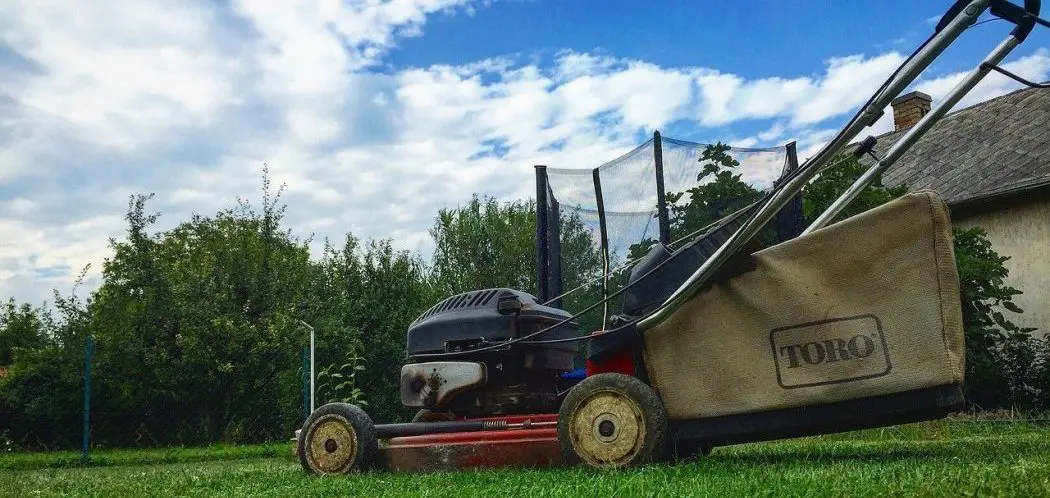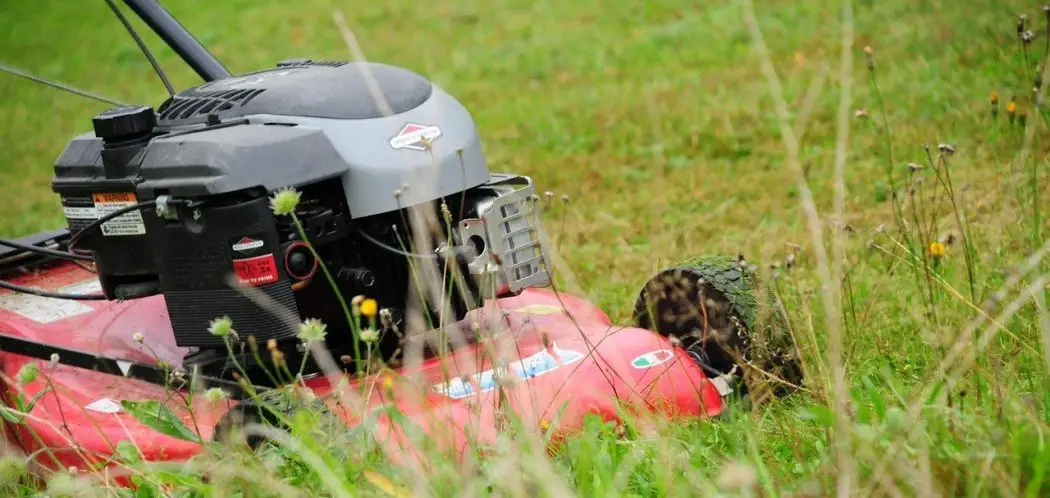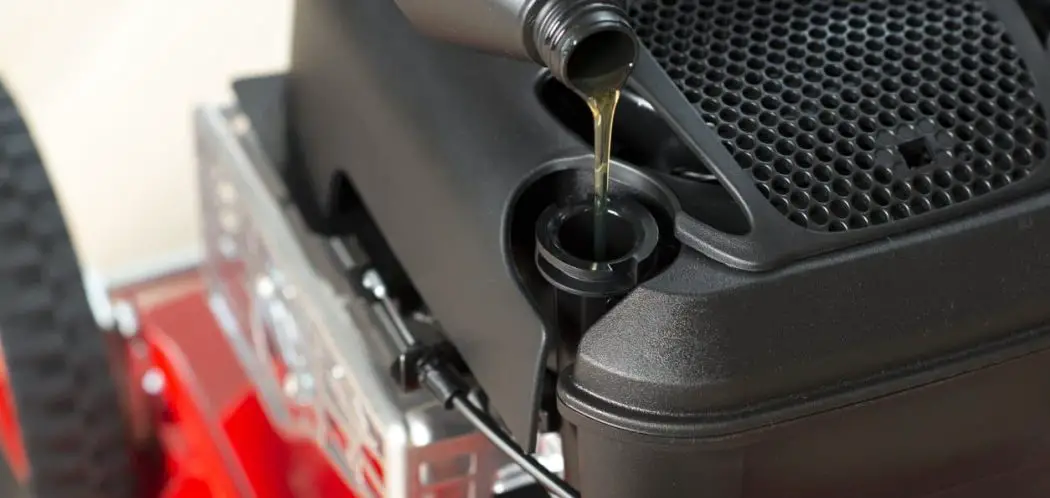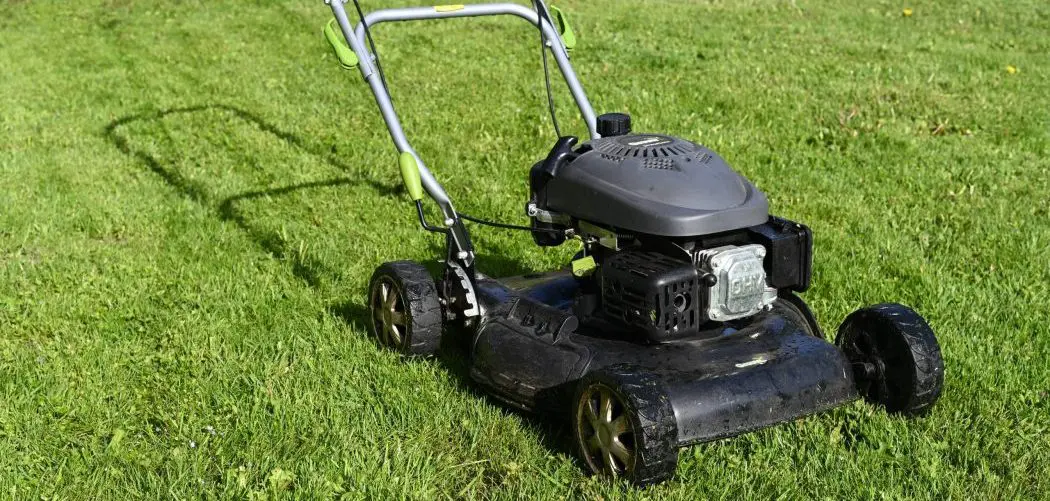The lawnmower is the crux of any landscape enthusiast’s equipment collection. Realizing your mower is coming to the end of its life can be crushing. The great news is that it is possible to salvage parts from your old mower for your new mower.
Most homeowners cut their grass with a rotary mower. Rotary mowers earned their name because they rely on the mower’s blades to rotate fast enough to cut any grass it comes into contact with. Blades are mounted horizontally to an axis, and the engine powers the axis to rotate the blades.
There are five main parts to a rotary mower
The cutter desk housing is commonly referred to as just “the deck.” Here, the blades and drive system are housed. The deck is usually in the shape of an oblong oval with a plastic cover protruding from one side. The grass clippings are ejected through this cover.
In the blade mounting and drive system, you’ll find a platform that is connected to the crankshaft of the mower.
A rotary mower’s blades are integral to its operation. These blades spin horizontally. They feature a curved edge that, when spinning, creates an upward air flow that sucks the grass blades up before they come into contact with its sharp edges. This air flow is also responsible for projecting the freshly cut grass out of the side of the deck.
The engine or motor of a lawn mower is what creates the force needed to propel the mower’s blade. These engines can be powered by electricity but are most commonly powered by gasoline.
The wheels of a mower create its locomotion across your lawn.
Are Any of These Parts Interchangeable?
Some of the major parts of a mower can be exchanged between two mowers.
Are mower decks interchangeable?
Yes. Most mower decks are interchangeable. The deck is the widest part of the lawn mower. If your current mower deck and your new mower deck have different dimensions, it may take some creative thinking to properly mount the new deck. If the measurements between the two decks are the same, you’ll have no problem installing a new deck.
Are lawn mower blades universal?
Mostly. As long as the length of the blade and mount match your old pair, you can easily swap them out. If you install blades that are not suited for your mower, you may find your grass isn’t getting cut as effectively as it used to, or your equipment could become seriously damaged.
Are lawn mower wheels interchangeable?
No. Much like wheels on a car, different mowers require different wheels. These can vary by size, air content, and texture of the tread. Consult your owner’s manual to determine what wheels work best for your mower. From there, you may be able to find similar tires to the original ones. Changing brands is just fine, but you cannot interchange different wheel sizes.
Are lawn mower engines interchangeable?
Yes, lawn mower engines are widely interchangeable thanks to industry standards for the mounting specifications of the mower. You have to be careful that the crankshaft’s length and diameter are compatible with your freshly placed engine. The crankshaft is paired with the self-drive pulley and blade mount. If the crankshaft doesn’t fit, you’ll have to replace all of these components because they all work in unison.
Swapping Out Lawn Mower Engines
Before you begin swapping out the engine of your lawn mower, thoroughly inspect the potential swap for any mechanical failures.
Begin by starting the donor mower. Does it start easily or did it take a while to turn over? An engine that is slow to start could be suffering from subpar carburetor function.
Clean the top and underside of the lawn mower deck. Remove all debris and dirt, especially from the area where the bolts were formally placed. Lubricate any cable linkages and thoroughly inspect all wiring left on the mower for damage. If any wires appear damaged, repair them with electrical tape or replace them at this time.
Installing the New Engine
To install your refurbished engine, hold the new engine in position on the mower deck. If a self-drive shaft or belt was present and is required by this engine as well, install it now. You can use the deck’s original bolts or the bolts from the donor mower’s deck, whichever fits your current deck and engine the best. Bolt the engine into place.
If a blade collar was previously present, reinstall it now. Slide your blade onto its mount and secure it with a blade bolt. Be careful to securely fasten the blade bolt. Serious injury could occur from a lawn mower blade that is not properly secured.
With all of the undercarriage in its rightful place, it’s time to turn the mower back upright. This is the time where you will connect your throttle pull, brake line, and other electrical wires to their appropriate adapter.
Once all of the parts of the mower are properly installed, you can fill up your fuel tank with new gas. Screw the fuel cap on tightly once the tank is full. You will also fill the oil pain with an appropriate amount of oil and replace the dipstick.
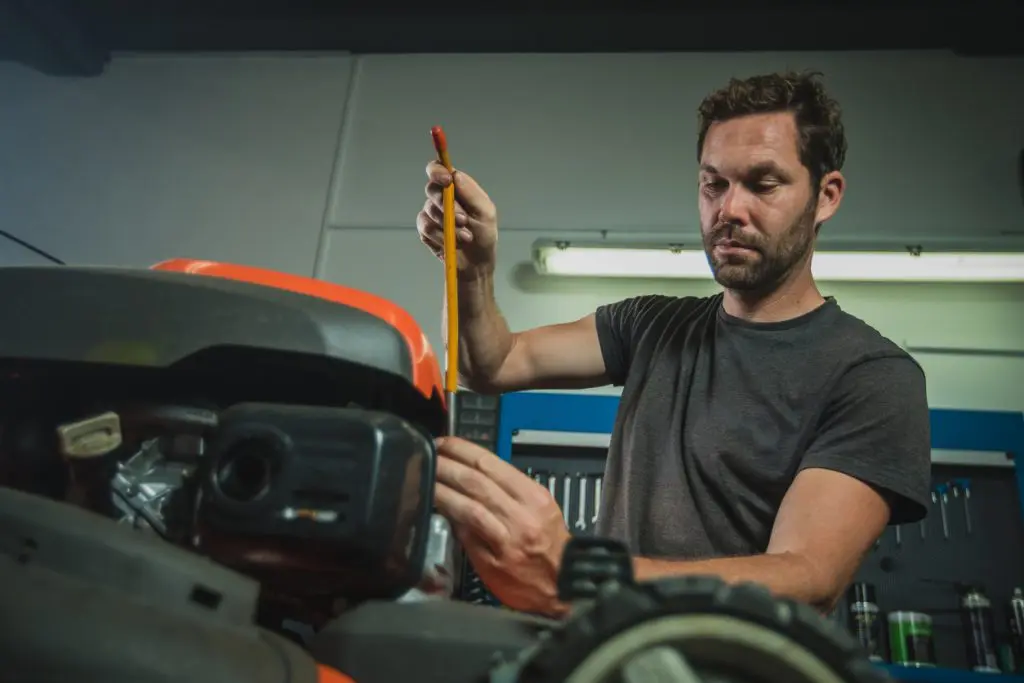
Testing
Start the mower to test your new engine. If it does not start, you may have neglected to reconnect one of the electrical wires, or a spark plug may have come loose during the transfer. Inspect the mower carefully.
If the engine has successfully started, take your mower for a test drive. Should you hear any clunking or clattering that is not typical of your mower, it’s possible you haven’t properly secured the engine or its blades. If there is a cover over your engine, it may not be closed all the way.
Watch the engine carefully as your mower goes over bumps. The engine should not bounce up and down or shift at any time. If you notice this, immediately stop the mower. Give the blades ample time to stop spinning, then inspect your engine bolts once more to ensure they are properly secured.
If your mower is now cutting your grass drastically higher or lower than it previously did, you may have incorrectly installed your lawn mower blade. This could be a safety concern. Cut the engine of the lawn mower. Give the blades ample time to stop spinning completely. Then, place the mower on its side, so you can inspect the blades. Adjust them accordingly, or consult your local lawn mower mechanic.
As your lawn mower comes to the end of its service life, you may consider salvaging certain parts of it for use on your next lawn mower.
If the blade mount is damaged, but the engine is in tip-top shape, rest assured that you can transfer that engine to a different lawn mower deck.
When the rest of the lawn mower is in pristine condition, but the engine is shot, you don’t have to get rid of a perfectly functioning lawn mower body. Ask your friends, look online, or visit a local scrapyard to locate a new engine. Lawn mower engines are interchangeable, and the swap is very simple.
Things to Look Out For
When the engine is running, does it operate smoothly? An engine that sputters or misfires is a sign of engine trouble.
If you rev the engine, does it rev easily? A delay in speed or surging could mean your carburetor is in poor condition.
Is any smoke emitted from the engine? When there is no excess oil to blame, smoke could mean the engine is severely worn.
Do you lose power in the middle of mowing? You may have a spark plug that is loose or damaged. This can also be caused by a dirty air filter.
If you notice oil or gas leaking from the engine, there may be damage to their respective compartments. These should be inspected thoroughly.
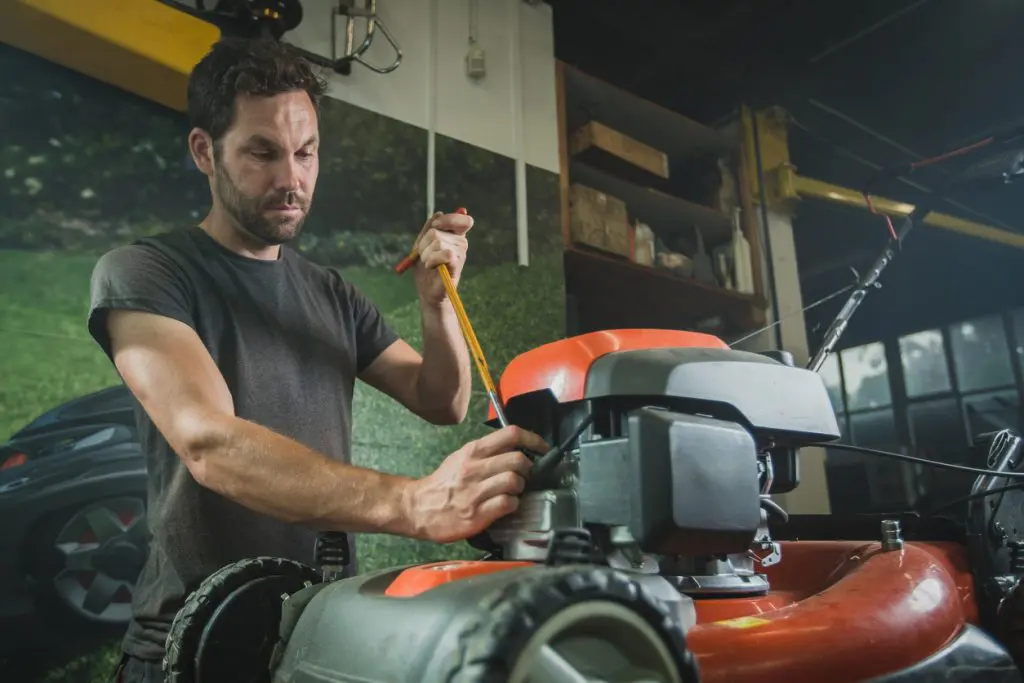
Now that you are certain you are swapping in an engine that will function at maximum capacity, it’s time to initiate the swap.
To prepare, you’ll need to drain the engine of all fluids. You should use an oil pan or a low lying basin to prevent gas and oil from spilling onto the ground. For smaller mowers, you can simply lay the mower on its side to allow the liquids to flow out. Larger mowers may require you to unhook the fuel hose and drain as much of the liquid as you can.
Next, you’ll need to remove the blades from the lawnmower. You should adequately disable the blade by using a universal blade removal tool or a block of wood. Then, loosen the blade retaining bolt. The blade should easily remove at this point. If a blade collar is present, remove it at this time as well. If you plan on using these blades in the future, set them aside or store them in a secure manner. Injury could occur if someone fell onto the blades or if the blade fell onto them from a height.
To remove the old engine, set the lawnmower back into an upright position. Disconnect the throttle pull, the brake line, handle safety interlock cable, and any other electrical wires.
Return the mower back to its side. Now, remove the three engine bolts holding the engine in place. The engine should gently release from its position with the bolts gone. If a self-drive belt is present, remove it as well.


